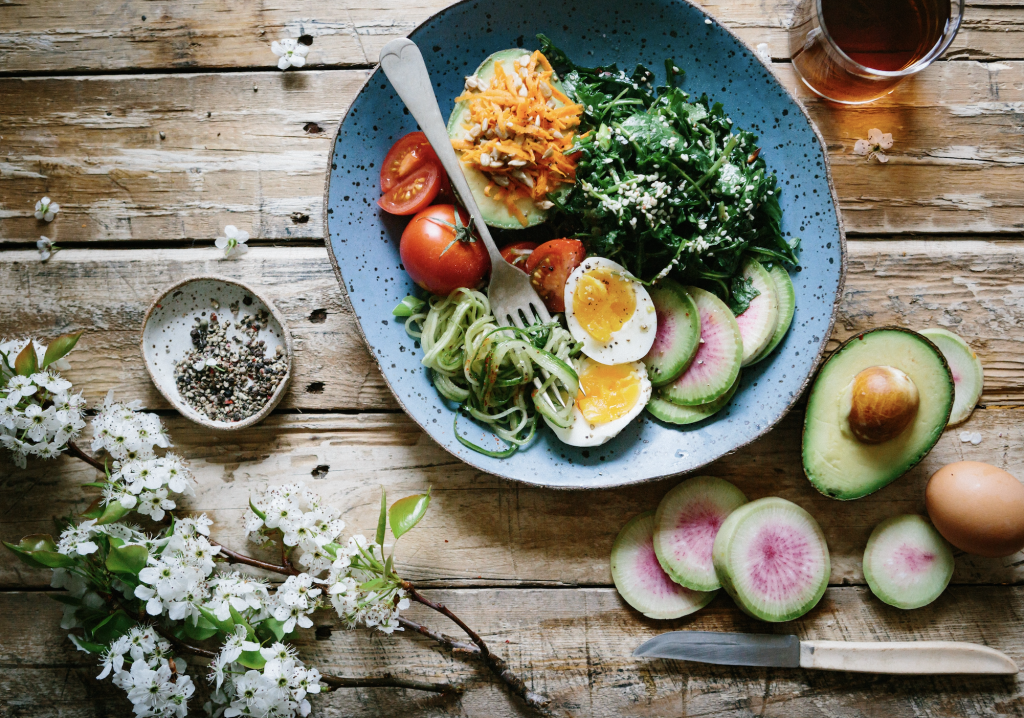
DIET
The nutritional advice you need to succeed a healthy diet and lifestyle.

There are 2 types of nutrients that you get from the food once the food gets digested; 1. Macronutrients namely carbs, proteins & fat. 2. Micronutrients such as vitamins and minerals. Water and fibre are also essential for your life; however, they are not considered as nutrients.
So, what about carbohydrates (carbs)?
Do we need them?
Can we survive without them?
Which ones to eat?
We have always been told that carbs are such an essential food group for us, may be as essential as water. But what is the truth?
Carbohydrates is a nutrient but it is not that important for our survival, as our body can make the glucose it requires (which is a type of sugar that you get from cabs) from proteinand fat. Carbs release glucose into the blood and once this glucose enters the cells, they provide energy. So, does it mean that if you are on low carb diet you are short of energy?
Although, our brain uses glucose as the main source of energy but if we don’t eat carbs our body can make glucose out of fats or proteins. And, if somebody is on ketogenic diet (mainly using fats as the main source of energy), our body can use the ketones produced as the by-product of fat burning as the main source of energy. This means if somebody is on a low carb diet, our body is still capable of producing energy that it needs to perform important functions.
Let’s dig deep into this topic to find out the answers to these questions.
What are Carbohydrates?
Carbs, or carbohydrates, are molecules that have carbon, hydrogen and oxygen atoms. In simple terms, carbohydrate is the sugars, starch and fibre found in fruits, grains, vegetables and milk products. It is also found in processed foods such as burgers, cookies, bread, pasta, pizza etc.
The two main classes of carbs are starches and sugars:
Starch is made up of lots of units of glucose. The glucose is released into our blood as carbs get digested and broken down. Now how quickly it gets released depends on the quantity, amount and rate of its absorption.
Quick releasing carbs are known as high GI carbs such as starchy foods as they are digested and absorbed more quickly into our blood than complex or low GI carbs.
High GI foods include sugar and sugary foods, sugary drinks, white bread, potatoes and white bread.Low GI foods include wholegrain foods, such as oats, buckwheat, amaranth and quinoa, some fruit and vegetables and some lentils.
Sugars
There are different types of sugars such as;
- Glucose, Galactose and Fructose are mainly found in starchy foods, milk and fruits respectively
- Lactose is found in milk and milk products is made up of Glucose + Galactose
- Sucrose known as Sugar, is made up of Glucose + Fructose
Out of these, glucose is absorbed the quickest in the gut causing a rapid increase in our blood glucose levels. However, other sugars do not increase the insulin level as rapidly as glucose because the galactose and fructose are stored in the liver before getting converted to glycogen (glucose reserve) or triglyceride (stored fat).
How does it all impact our weight?
If we eat too much of high GI foods such as starchy foods, the glucose is released quickly in our blood increasing our blood glucose levels. As it did not have the time to get properly digested in our gut, it does not keep us full for longer and makes us hungry quickly as the blood glucose levels drop. This is due to our hormones known as hunger hormone called Ghrelin as this hormone is released from the stomach which sends signals to your brain that you are hungry.
I will talk more about hormones affecting our huger and weight in the next article.
Starchy foods have always been promoted for maintaining our blood glucose levels and losing weight. However, we know now why people struggle to do so if they base their diets on starchy foods. Because eating too much starch foods is equivalent to eating too much sugars that causes blood glucose to rise and increases stored glucose and triglycerides (fat).
So, what should we eat?
We need to eat foods that keep us full for longer and helps maintain our blood glucose levels such as protein, fat and fibre rich foods.
- Eat unprocessed foods: Opt for whole and unprocessed real foods such as fruits and vegetables, plenty of omega 3 fats (fish, walnuts, olive oil), goods fats (coconut oil, olive oil, avocados), legumes, nuts and seeds. These foods are high in antioxidants and polyphenolsthat reduce inflammation and oxidative stress, help promote anti-aging, balance your blood sugar levels, and improve your liver detoxification to prevent or reverse insulin resistance and diabetes.
- Include proteins: Opt for rich sources of proteins such as wild caught fish, grass fed poultry, legumes, seeds, nuts. Proteins
- Fats: Eat fats that promote anti-inflammation in your body including omega-3 fats and monounsaturated fats, such as extra-virgin olive oil, avocado oil, nuts and seeds.
- Fibre: Include fibre-rich foods such aswholegrains, beans, legumes, nuts, seeds and non-starchy vegetables with meals or eat them as salad.
- Fermented foods: Include foods such as sauerkraut, kimchi, kambucha, fermented idli, dosa and miso that contain good amounts of probiotics which can feed the good bacteria in your gut.
Final thoughts
As we have seen there are different types of carbohydrates. So, making the right choices by eating healthy, fibre-rich carbs including wholegrains, green non-starchy vegetables, nuts and seeds more, while avoiding processed, unhealthy, refined carbs like sugary foods and drinks, white rice and white flour would help maintain steady blood sugar levels, feed good bacteria in the gut and promote weight loss.

